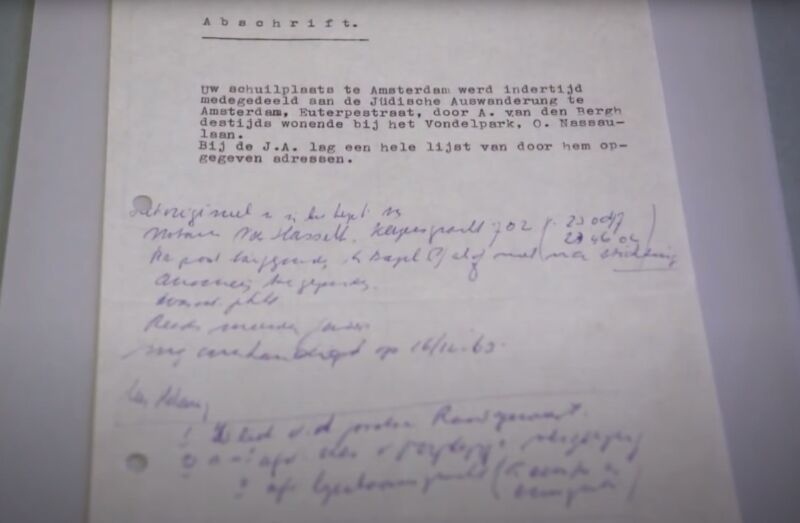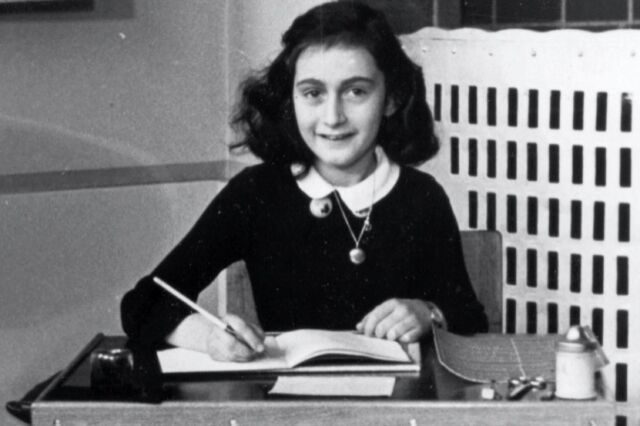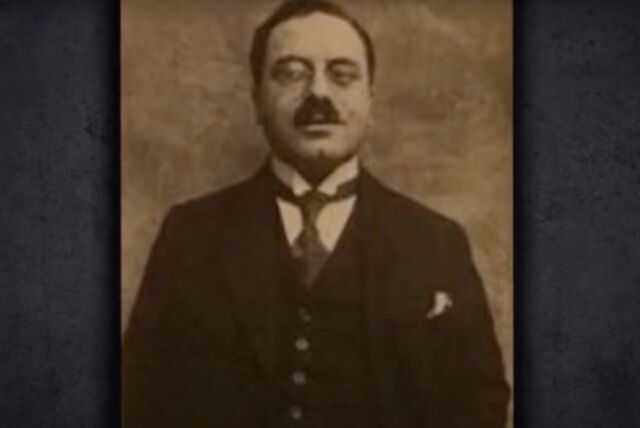Publisher pauses printing of Anne Frank book after allegations of “shoddy” research

Last month, we reported on a new hypothesis about who might have betrayed the hiding place of Anne Frank and her family to the Nazis in 1944, which ultimately led to the death of Anne and most of her family. The new suspect: a local Jewish leader named Arnold van den Bergh, who may have handed over lists of addresses where fellow Jews were hiding in order to protect his own family. The theory was featured in a segment on 60 Minutes and is described in detail in a new book by Rosemary Sullivan: The Betrayal of Anne Frank: A Cold Case Investigation.
The news caused a stir, given that the named suspect was also Jewish. It also raised the hackles of historians who expressed skepticism about the hypothesis. Now, Reuters is reporting that the book’s Dutch publisher, Ambo Anthos, has suspended printing for a second run of the book after questions were raised about the shoddiness of the research, per an internal email that the news service acquired.

The email was addressed to all of Ambo Anthos’ authors. The publisher wrote it should have taken a more “critical stance” on the new book. “We await the answers from the researchers to the questions that have emerged and are delaying the decision to print another run,” the email read. “We offer our sincere apologies to anyone who might feel offended by the book.”
On July 6, Anne Frank and her family began their lives in the Secret Annex attached to the office building at Prinsengracht 263, where Otto Frank had worked. The annex was only accessible via a door on the landing that was kept hidden by a bookcase. Anne chronicled their lives in the annex in her diary for the next two years and made her final entry on August 1, 1944. Just three days later, German police led by the SS stormed the annex, arresting the Franks and the Van Pels family. Anne Frank died (likely of typhoid fever) at age 15 a day after her older sister, Margot, at the Bergen-Belsen death camp between February and April 1945. Their mother, Edith, had died of starvation the year before. Only Otto Frank, Anne’s father, survived.
Suspects who have been proposed as possible betrayers over the ensuing decades include Lena Hartog, wife of the company’s assistant warehouse manager; Anton “Tonny” Ahlers, a member of the National Socialist Movement in the Netherlands; stockroom manager Willem van Maaren; and Nelly Voskuijl, sister of Bep Voskuijl.
The Anne Frank House undertook its own investigation and arrived at a surprising new theory in 2017, thanks to the efforts of a historian named Gertjan Brock. It’s possible, Brock suggested, that there was no betrayal, and the SS raid was really part of ongoing attempts to track down purveyors of illegal goods. This theory holds that the officers just happened to stumble upon the Jewish families hiding in the attic.

When he decided to revisit the cold case, retired FBI Special Agent Vincent Pankoke assembled a team that included some 20 historians, criminologists, and data specialists. While admitting that the case is circumstantial and some reasonable doubt remains, Pankoke et al. concluded that van den Bergh was the most likely culprit. A crucial piece of new evidence was an anonymous note to Otto Frank that specifically named van den Bergh as the one who passed on the information about where Jews were hiding in Amsterdam. The original note was lost, but Otto Frank made a copy and preserved it, although he never spoke publicly about the allegation.
But University of Leiden historian Bart van der Boom dismissed the theory as “defamatory nonsense” to the BBC, while Amsterdam University’s Johannes Houwink insisted that, if lists of Jews in hiding had existed, they would have surfaced long before now. The Anne Frank House was more circumspect in its reaction, stating that the Pankoke team’s investigation was impressive and had “generated important new information and a fascinating hypothesis that merits further research.”
Others who have questioned the research include the foundation set up by Otto Frank, the Anne Frank Fund, which insisted Sullivan’s book was “full of errors.” Historian Erik Somers of the Dutch NIOD Institute for War, Holocaust and Genocide studies praised the extensiveness of the investigation. But he thought the anonymous note was not quite the slam dunk Pankoke et al. thought it was and said the team had made certain assumptions about Jewish institutions in Amsterdam during World War II that were contradicted by other historical research.
One of the investigators on Pankoke’s team, Pieter van Twisk, told Reuters that he and the team were “completely surprised” by the email. “We had a meeting last week with the editors and talked about the criticism and why we felt it could be deflected and agreed we would come with a detailed reaction later,” he said. Per the BBC, van Twisk told Dutch public broadcaster NOS that the team had never claimed to have uncovered the complete truth. He estimated that their theory had a “probability percentage of at least 85 percent” and the hope was that their research would help fill some gaps in the existing research.
https://arstechnica.com/?p=1830881



